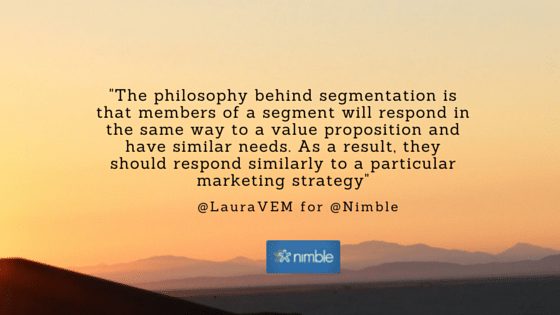Growth, measured in terms of increased revenue, profit, and/or assets is a key initiative for most companies. The recent merger, acquisition and takeover frenzy of the past few years reflects what is known as inorganic growth. Organic growth, now back in vogue is the rate a business expands through its own business activity. Organic growth requires a company to create competitive advantages, differentiate and innovate its product/service offerings, and to hone in on viable existing and new customer opportunities.
[Tweet “Organic growth requires a company to create competitive advantages, differentiate and innovate its product/service offerings.”]
Why the focus on organic growth? John Cummings of Business Finance, who examined the differences in shareholder return and revenue growth of the S&P 500, found that organic growth produces a better financial outcome. Organizations who excel at efficient organic growth see total shareholder returns of 20-28% and revenue growth of 13%. On the other hand, organizations that derive growth efficiently from M&A typically see only about 13-15% total shareholder returns and revenue growth of only 8%. This is a big difference.
[Tweet “Organizations who excel at efficient organic growth see total shareholder returns of 20-28% and revenue growth of 13%.”]
McKinsey & Company studied 100 of the largest US corporations in 17 sectors and found that “a company whose revenue increased more slowly than the GDP was five times more likely to succumb in the next downward cycle, usually through acquisition, than a company that expanded more rapidly.” McKinsey found similar results to Cummings, i.e., that companies growing organically outperformed other firms in terms of revenue growth and shareholder value. Upon further examination, McKinsey found that no matter which industry the high growth group competed in, the average market growth of their portfolios outperformed that of their peers because these companies tended to focus their growth in the right places at the right times, focusing on faster-growing segments and introducing new product categories in their industry to achieve growth.
The takeaway : [Tweet “Innovation and segmentation is required in order to successfully expand organically.”]
This is why identifying segments where their company can gain traction and momentum is a top priority for marketers when growth is a primary initiative. Most organization don’t have the resources to pursue numerous markets simultaneously. So, the most successful marketers use data and analytics to evaluate segments and then recommend which customers, geographies, and industries offer plenty of headroom for growth. They divide a market into a subset of homogenous groups, each of which react differently to promotion, communication, pricing and other variables of the marketing mix. The philosophy behind segmentation is that members of a segment will respond in the same way to a value proposition and have similar needs. As a result, they should respond similarly to a particular marketing strategy.
In addition to greater shareholder value and increased growth, additional segmentation benefits include the ability to: better serve customer needs and sustain customer relationships across the customer lifecycle, and develop niche strategies and focus marketing and sales activities and investments on the most attractive opportunities.
Three Steps to Build a Segmentation Model
We highly recommend a disciplined fact-based approach to segmentation that will help you create a model for future efforts. This means, rather than selecting a segment based on subjective criteria such as affinity for a particular market or salespeoples’ opinions, you would build a model using objective data-driven criteria for analyzing and prioritizing segments. Building a model allows you to compare customer and/or market segments on an “apples-to-apples” basis. Here are the three key steps we take our customers through:
1. Defining the filtering dimensions. The key to building any model is to begin with selecting the filtering dimensions. We like to use two primary dimensions: accessibility and opportunity. Accessibility describes how easy the segment is to approach, given the organization’s current markets and expertise; opportunity describes the size and profitability of the target segment.
2. Establishing your criteria. Once you have your dimensions, you will need to decide the criteria for each dimension. For example, accessibility criteria might include a technology platform or the number of customers you already serve in a market. Opportunity criteria might include the number of customers in the segment, the industry growth rate. Establish a weight and rank for each of your criteria.
3. Gathering the data. After you have built your model, the next important set is capturing the data and applying the appropriate analytics. The data may be something you extract from your internal systems, append from external sources, or acquire from market research. Use the data to evaluate and score each customer and/or market segment against the criteria. Then “plot” the segments along the dimension or use some other prioritizing method to determine which segments offer the best growth potential.
Done well, segmentation both directs and fuels organic growth, ultimately increasing shareholder value and revenue. Achieving these goals requires market and customer segmentation using a data-driven model approach that includes defining the filtering dimensions, establishing your criteria and gathering the relevant data in an objective manner. For more information on this process contact us, we are happy to have a fifteen-minute conversation to explore how we can help.

